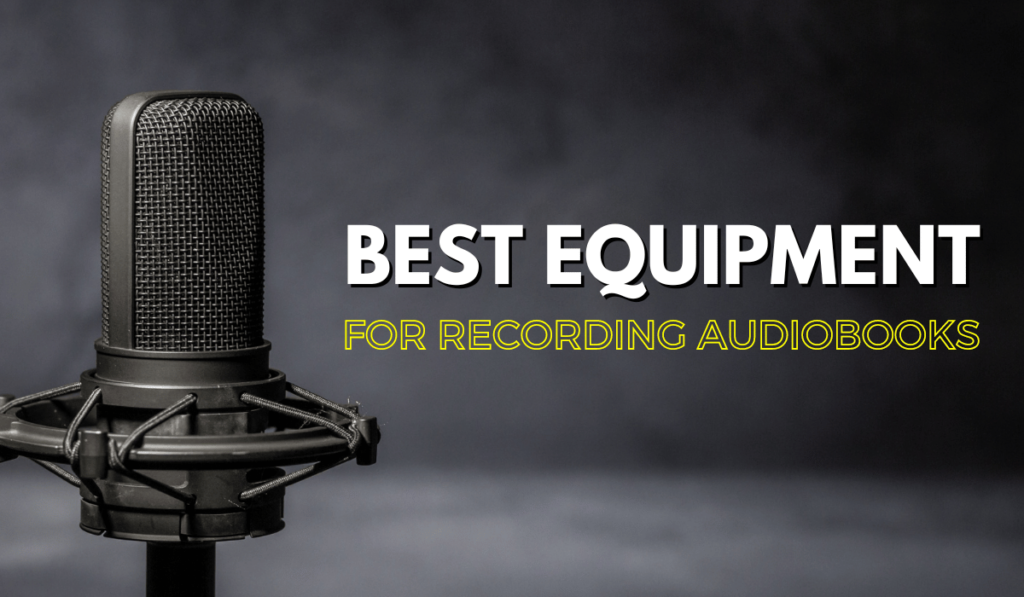
If you’re interested in making audiobooks, you’re going to need the right equipment. From microphones to soundproofing, this guide covers the best equipment for recording an audiobook.
Remember, the gear is only one part of it. You also need to properly understand the process to maximize the final quality. We explain the process of making audiobooks from start to finish here – How To Make An Audiobook.
Now, let’s take a look at what audiobook equipment you’ll need, and recommend some of the best choices for each type and across different budgets.
Best Equipment for Recording an Audiobook
This section shows you what equipment you need to record an audiobook, and suggests some of the best product choices.
1. A Microphone
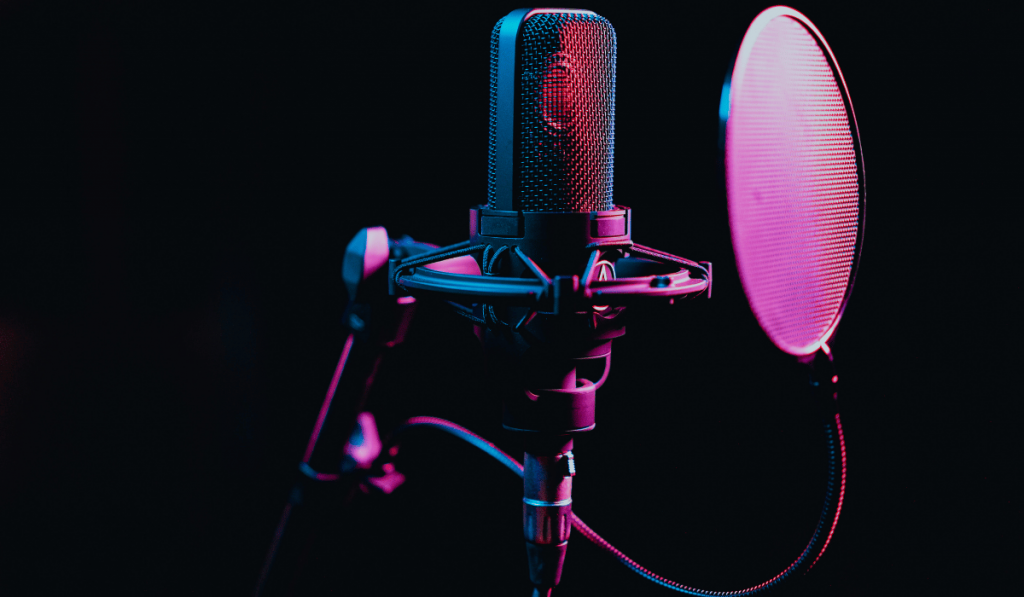
Using a great microphone is essential, and largely dictates the final quality of your audiobook (along with the vocal acting).
There are several viable options when it comes to microphones. If you are on a tighter budget, a USB mic is a more affordable option.
- Recommended – HyperX QuadCast USB Mic – $100. Achieves best results for USB mics in this price range
- MAONO USB Mic Kit – $59
- TONOR USB Microphone – $52
If you have the budget, a professional XLR microphone and audio interface will yield better results.
- Recommended – Shure SM7B – $499. Sounds fantastic for vocals if you have the budget.
- MAONO XLR Condenser Mic – $64
- Shure SM58 – $100
- Rode NT1-A -$200
Still undecided? I go into even greater detail on mics in this guide – The Best Microphones for Recording Audiobooks.
2. An Audio Interface (if not using a USB mic)
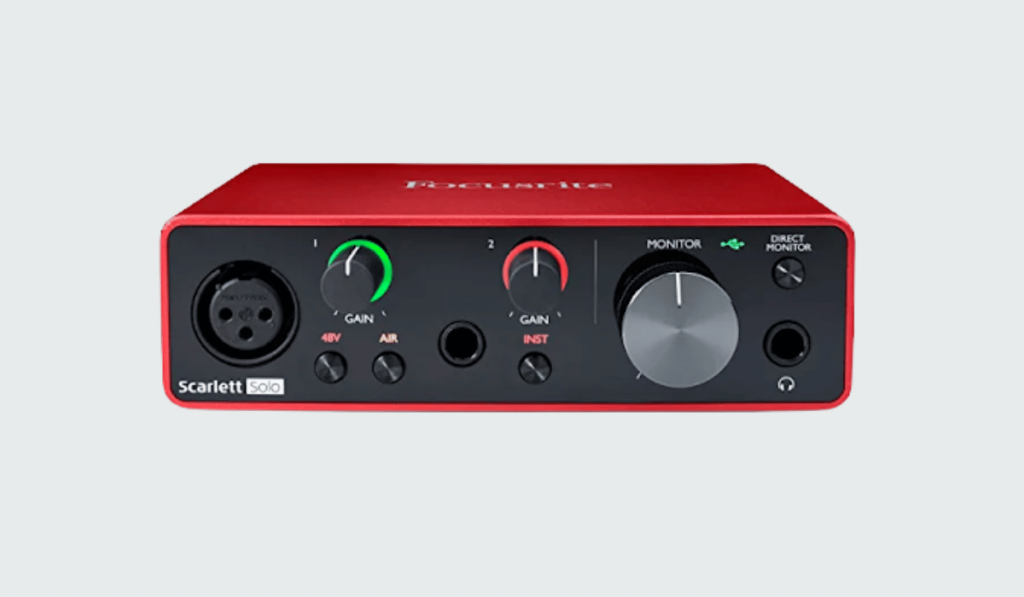
These are responsible for capturing the microphone’s input and converting it into a digital file.
There’s no need for an interface if you’re using a USB mic as they have them built in.
Audio interfaces make a better investment if you plan on working with and recording audio regularly. They provide more flexibility for recording and generally offer increased sound quality.
Here are the recommended audio interfaces for a range of budgets.
- Focusrite Scarlett Solo 3rd Gen USB Audio Interface – $119
- PreSonus AudioBox USB 96 With Ableton Lite – $99
- Recommended – UA Volt 276 USB – $150. Has the best recording quality in this price range. A UAD Apollo ($800) is better but fairly expensive.
3. Audio Software
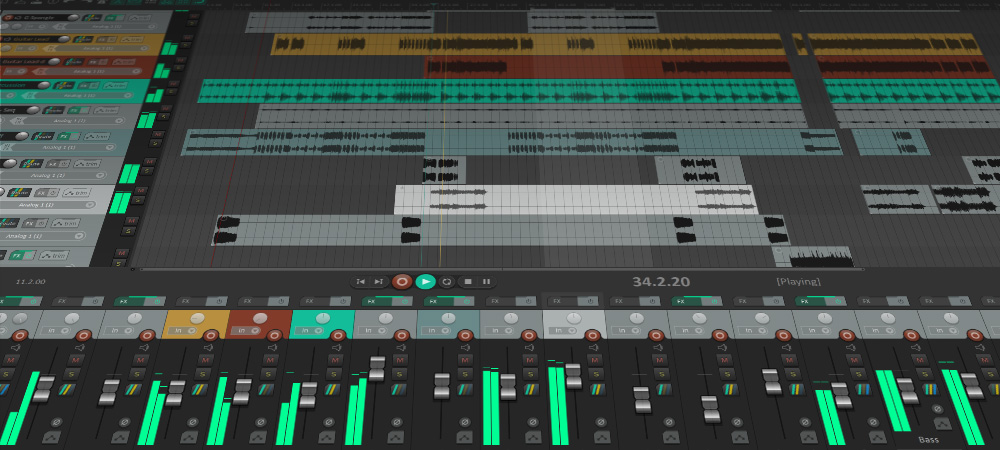
A DAW (digital audio workstation) is the software needed to record and edit audio on a computer. These are the core of any modern audio production environment, and understanding how to use them is key to making an audiobook.
A free DAW like Reaper or Audacity will do the trick, although other popular choices like Logic, Ableton Live, or Pro Tools are also great.
- Audacity (Free)
- Reaper (Free)
- Ableton Live
- Logic Pro
- Pro Tools
4. Acoustic Equipment
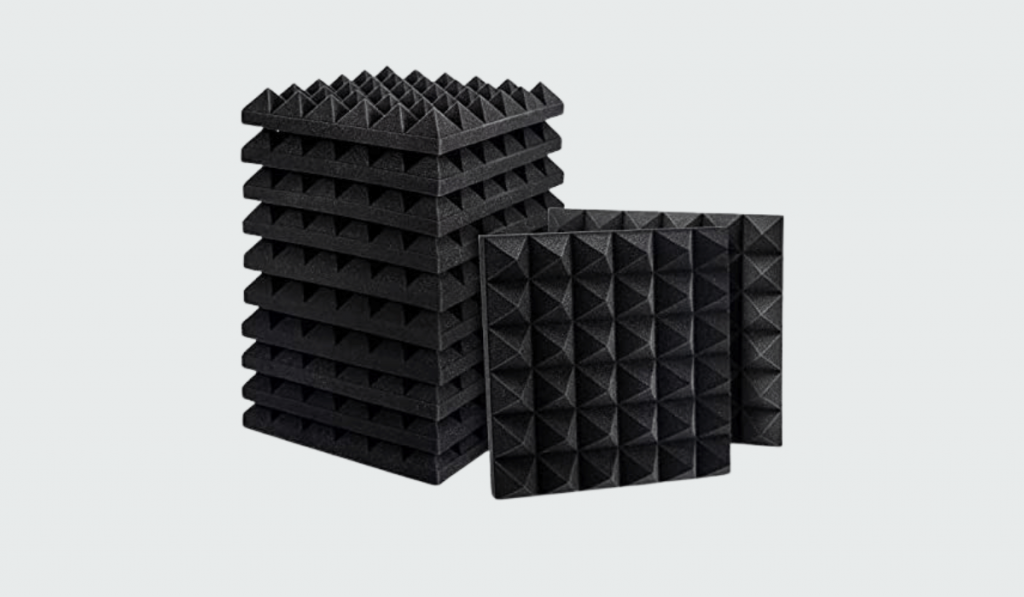
To get the best-sounding vocal recording for an audiobook, using soundproofing and acoustic equipment goes a long way.
Depending on the room you are in, the acoustics might not be great. You might record unwanted reverb, echo, or reflections. Soundproofing foam can help to reduce these in a pinch. Acoustic treatment is a huge topic that professionals study for years. Pro studios will use thousands of pounds worth of purpose-designed proofing to maximize the audio quality.
You can still achieve decent results from home or in a basic environment with the right tools.
Here are some basic pieces of acoustic gear:
- Pop Shield – $10
- Acoustic Foam – $25
- Vocal Booth – $499
- Recommended – Mic Isolation Booth – $63. This achieves the best results for a limited budget.
5. A Mic Stand (if needed)
A mic stand will help to make the narrator’s life easier and is essential for most microphones. Although some mics come with built-in stands making it unnecessary.
- Mic Stand – $26
6. iPad/Screen to read from
Giving the narrator an iPad or computer screen to read the story from is infinitely better than using a paper book. Paper books are loud, and the rustling and page-turning noises will get picked up by the mic, creating extra hours of editing work.
An iPad mounted on a music stand or similar stand is probably the easiest, quietest way to do it. PC screens are also good, although mouse/keyboard noises can also cause problems. iPads are the most silent option.
7. PC
It goes without saying, a powerful PC makes audiobook production much easier, and these are essential for any type of modern audio production.
Comments on Budget and Quality
When it comes to producing an audiobook, the amount of money you should spend on the equipment ultimately depends on your overall budget and long-term plans for producing more content.
If you are on a small budget, then you can start with cheaper gear initially, then save up for more expensive pieces if your books sell well and generate a profit. If you plan on producing audiobooks for a long time, then it’s definitely worth investing in high-quality gear.
That said, you also need to save money to hire talented vocal narrators (if you aren’t reading it yourself). Spending money on the voice actors is equally as important as the gear – recording a bad actor through the best microphone will still create bad results. But a great actor through mediocre gear won’t be so bad to listen to, provided you reach a minimum level of audio quality.
How to Make an Audiobook
Here is a brief overview of the steps to produce an audiobook:
- Plan out the project
- Choose a book to produce
- Find a suitable vocal narrator
- Choose and set up a recording environment
- Do a test recording to ensure the quality is right
- Record the main audio content chapters
- Edit the recording
- Mix and master the files
- Export the audio
- Deliver to audience or publisher
For more details, check out our full guide on this topic – How To Make An Audiobook.
Closing Thoughts
With this equipment, you should be able to create high-quality vocal recordings and produce a fantastic listening experience for your audiobook audience. For a small investment, you can capture detailed and clean recordings from your own home!
Remember, the gear is only one part that determines the overall quality of the production. You also need to pay attention to every stage of the production process to create high-quality audio content.
Make sure you follow our guide on How To Make An Audiobook to learn other areas of consideration for maximizing quality.
